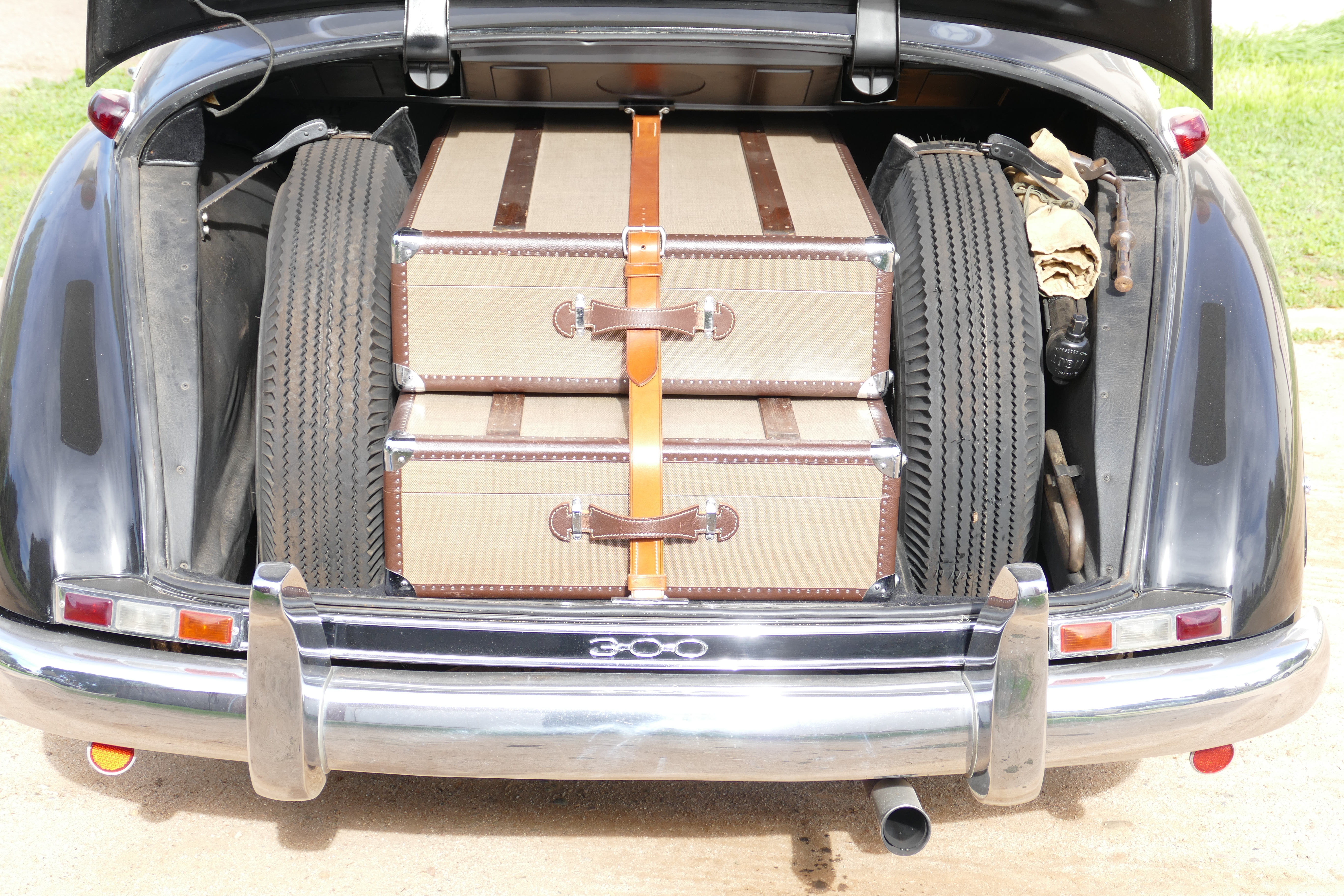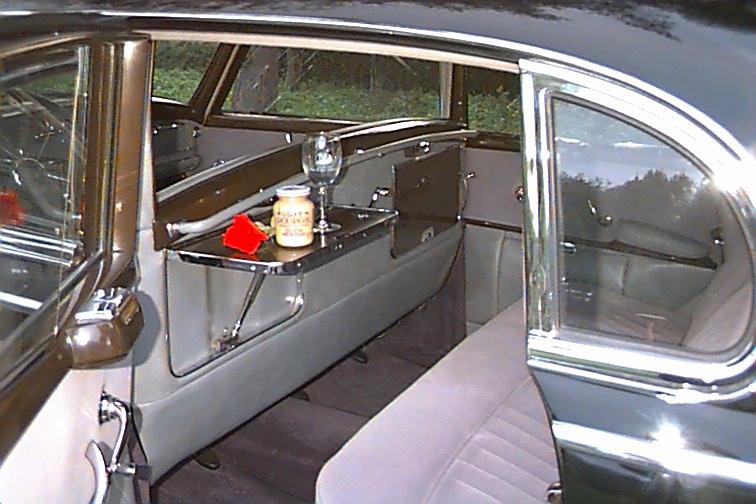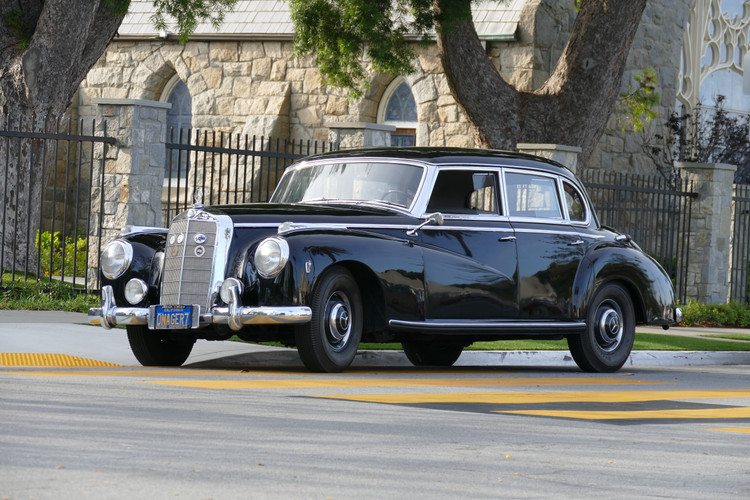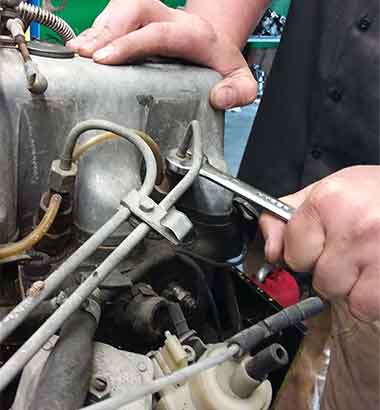Restoring a 1952 300 W186 Chassis with Rare Options
by Bob Gunthorp, edited by Sheila Heaney
The Mercedes-Benz W186 300 series vehicles were the first newly designed vehicle produced by Mercedes after World War II. They were the "flagships" of the sedans and limousines through 1956, the “diplomat car”. A total of 7,646 were produced from 1951-56. A total of 2,659 were built in 1952, with an original cost DM 19,900 ($7,600) In Germany.

We purchased our 300 Mercedes in 1982 and completed the restoration in 1987, nicknaming it the “Dowager Queen”. It is now equipped with a rear seat heater, the factory two-piece luggage set, and a second spare tire. The original cost for the optional divider window and heater for the rear compartment was an additional $365.55. The two-piece luggage set cost an additional $96.32. The luggage was a personal gift to Terry from a couple from Finland. They were both good friends and business associates.

The story of this 1952 300 actually began in April 1980. That year a well-known Mercedes Benz restorer, Tom Kreed, decided to relocate from Chicago to Escondido, CA. He brought his Mercedes-Benz parts collection along with him, including a 1954 300b which he was planning to strip down for parts. The 300b was totally rusted out. It would have almost impossible to have made it even road worthy again let alone to restore it. One more reason they call the Midwest the “rust belt”. However, this Mercedes 300 did have several very unusual options. It featured a factory divider window and a rear seat heater. I purchased it just to have the window because of its rarity. I only found out about the heater after my purchase. At the time I purchased it I did not own a 300. I just thought it was really cool to have the divider.

Now we will fast forward to June 1982. One of our customers, Mike Long, told me about a friend of his who owned a 1952 300. The engine was in need of a complete rebuild, so the owner put it in storage in a garage in North Park until he could find the time and money to have the engine rebuilt. Well, there it sat in the garage for eleven years until the property owner decided to sell the house. By this time the car’s owner was living in Norfolk, Virginia. He decided to have the car towed to our shop for the repairs. He planned to drive it to Virginia afterwards and sell it there. When the owner was informed of the very major repairs needed and their cost, he asked us to try and sell the car for him as-is. After a short time, my wife Terry fell in love with the “Grand Old Lady”, so we bought it ourselves to restore and keep. During the restoration we installed the divider window from the other 300 Benz. See I did find a use for the rare divider window.
The original 1950’s sales literature shows the divider without trays.
Some of the photos I have of the dividers show just a single tray on the
passenger side. My car is the only one I have seen with trays on both
sides. Also this is the only I have seen with a reading light over each
tray. The car also has a heater under the passenger seat to heat the
rear compartment. The controls for heater valve and the blower are on
the passing rear side. This probably is the rarest of all of the divider
window cars.
My authority in Germany best guess is that no more
than 20 vehicles were produced with divider windows. One of the things I
found out is that the factory didn’t keep records of the cars that were
produced with special options like the divider windows. My example is
my 1967 200D extended wheelbase. The vehicle didn’t have a unique VIN
number like most vehicles. When one was ordered it used option code 846,
however when I asked the factory about the number produced the said
there were no records kept. So I asked my friend, Bernd Köhling in
Germany—who has written many books on Mercedes—if he had any idea how
many of the W110 extended wheelbase vehicles were produced. He responded
with the production numbers within three days. It seems that the
factory didn’t keep that information but the sales division did.














